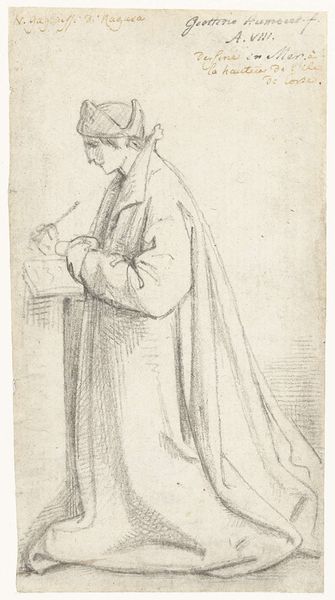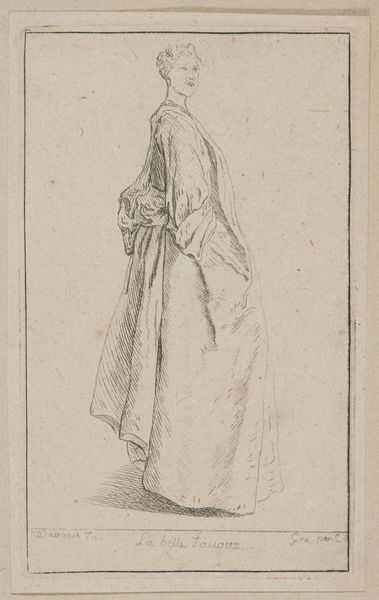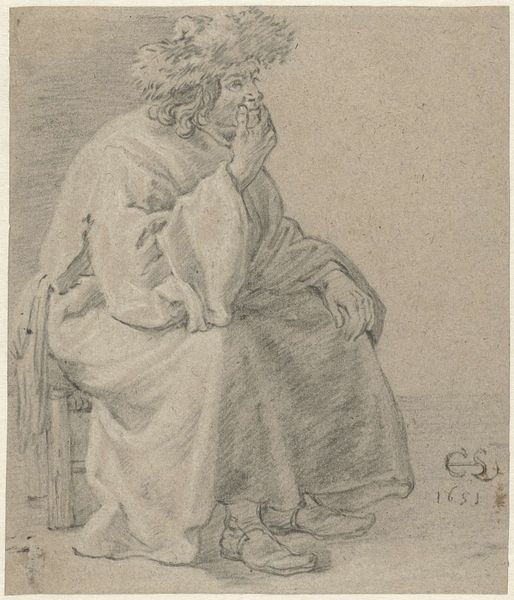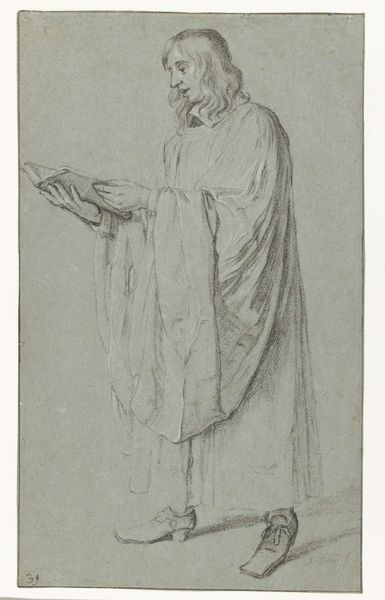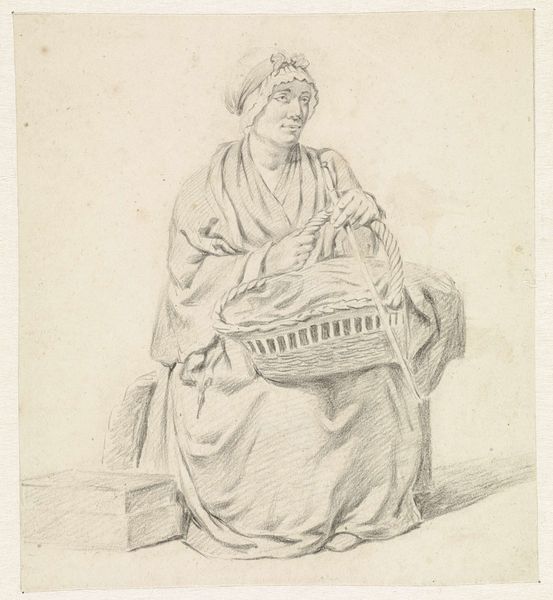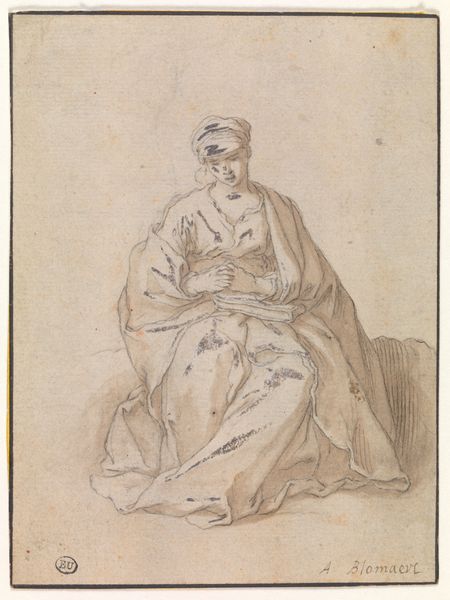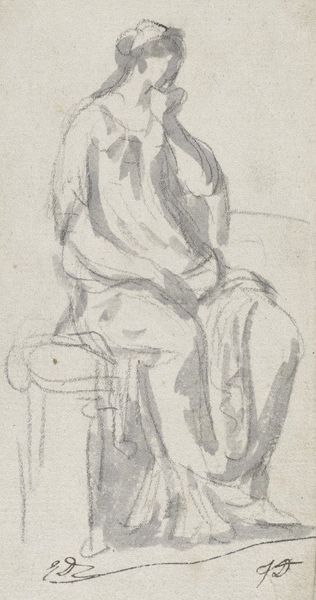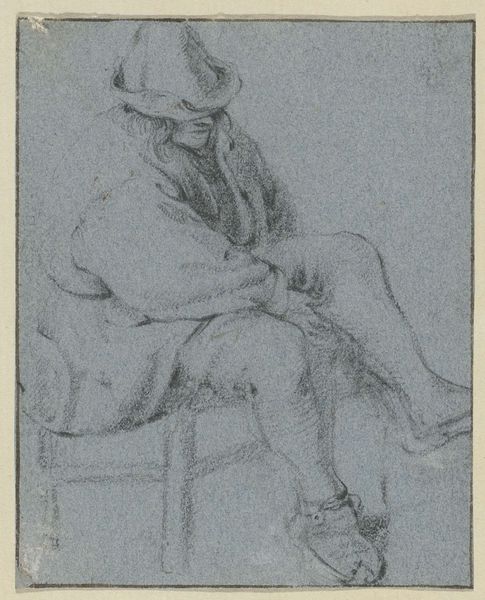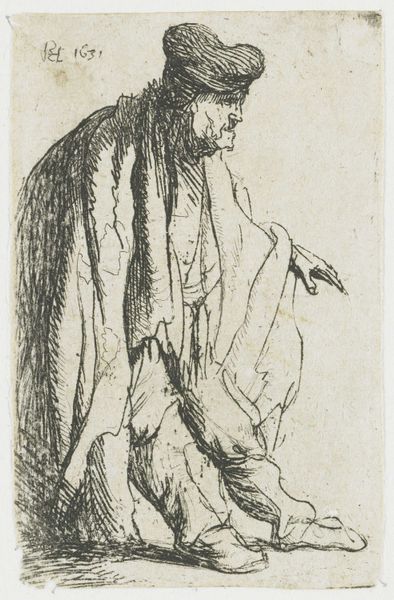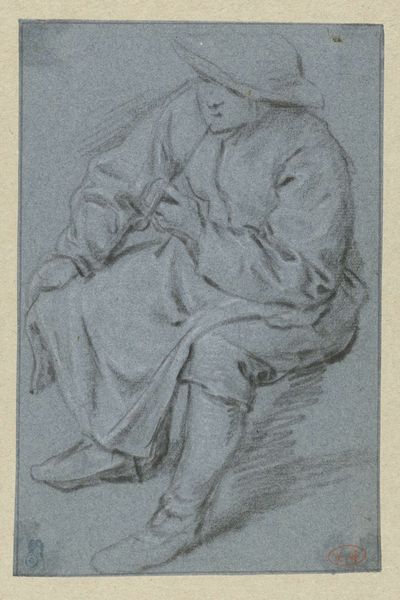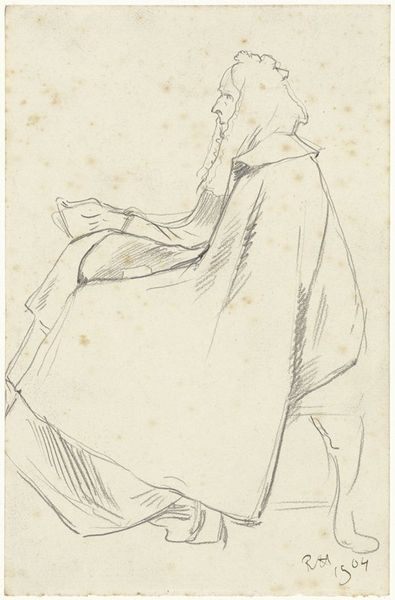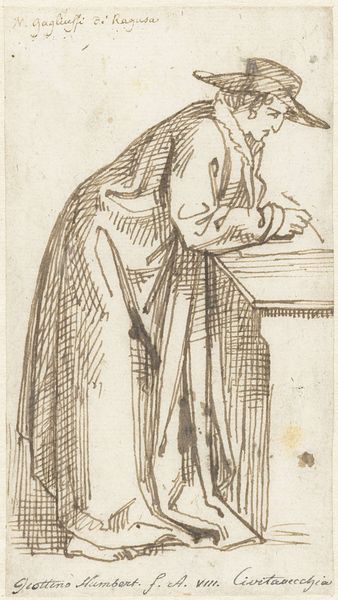
drawing, pencil
#
portrait
#
pencil drawn
#
drawing
#
neoclacissism
#
pencil sketch
#
figuration
#
pencil
#
pencil work
#
academic-art
Dimensions: height 137 mm, width 86 mm
Copyright: Rijks Museum: Open Domain
Editor: This drawing, "Zittende, lezende man" by David-Pierre Giottino Humbert de Superville, created sometime between 1780 and 1849, depicts a seated man reading. It's made from pencil, and the lines are so delicate! What jumps out to me is how much the figure's clothing dominates the composition. What do you see in this piece? Curator: The dominance of the clothing, as you call it, is precisely what draws my attention. Consider the texture and detail rendered by humble pencil. This work challenges a simple notion of portraiture by emphasizing *materiality*, and process, rather than purely focusing on the sitter’s likeness or status. Think about the labour involved. The artist spends time to show fabrics, layering strokes of the pencil and paying meticulous attention to depicting those materials worn by an upper class individual. How does focusing on clothing contribute to how we understand labour in the Neoclassical period? Editor: So, it's less about who this man is, and more about what the drawing *shows* in terms of the clothing and the work to make it. It shifts my focus from just looking at it as an image of someone. I am curious about the relationship between labour and the subject's position of being at leisure? Curator: Precisely! The image hints at a whole socio-economic network that underpins his ability to sit and read. The material rendering—the very process of creating the drawing—highlights the systems of production and consumption at play. What about the paper itself, the type of pencil, and the circulation of the artwork? All are elements within a complex web of social and economic activity that shape our understanding of the drawing. It’s not just a drawing; it’s an artifact deeply embedded in its historical moment. Editor: I see. Thinking about the pencil, the paper, the making of the image… it's like uncovering a hidden history embedded in the artwork itself. Thank you! Curator: A pleasure. This way of seeing encourages us to really understand an image as more than a simple visual thing but rather part of society, embedded in historical practice.
Comments
No comments
Be the first to comment and join the conversation on the ultimate creative platform.
